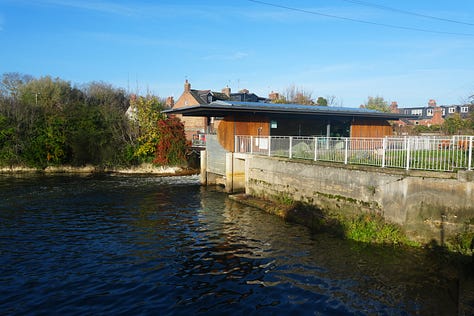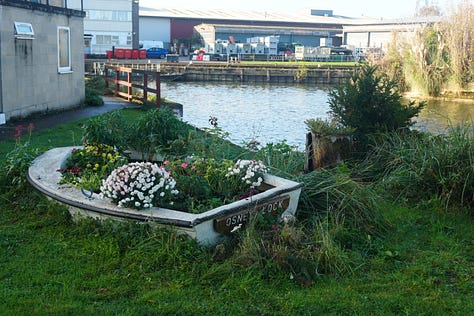Britain goes coal-free, but community power still matters
From river currents to power grids, Osney’s hydro project shows that the future of energy isn’t just renewable - it’s shared.



With Britain’s last coal plant switched off in 2024, attention is turning to who owns the power in a decarbonised grid. Whereas for residents of Osney Island, the answer hums softly beneath the Thames.
The Osney Lock Hydro station, run by West Oxford Community Renewables, channels the river’s flow through an Archimedean screw to supply about 60 homes and the Environment Agency’s depot. Any surplus feeds the national grid, and profits are reinvested locally.
“We’re small in megawatts, but we can make the grid smarter,” Simon Collings, a director of West Oxford Community Renewables (WOCoRe), said, “but it shows citizens can help the grid work more efficiently if they’re included in the planning”. For Britain’s post-coal moment, that may be the real revolution: not only cleaner energy, but shared responsibility for how it flows.
Through Project LEO, Osney residents collaborated with Oxford researchers to test how small generators and household batteries can stabilise national networks. “We mobilised homes with panels and storage,” Simon said. “The thesis was that local generation could help manage upgrades more cheaply”.
Along Osney Lock Hydro’s towpath, a new public display flickers with live generation data. “It’s about visibility and trust,” Simon said. “When people can see the numbers, they start to understand their own role in the system.”
Simon believes such collaboration is vital as electric-vehicle charging and heat-pump adoption rise. “At some point the transformer here won’t cope,” he warned, “so we have to strengthen the local supply in a planned way”. The trial’s findings now feed into Oxfordshire’s Local Area Energy Plan.
But he warns that Britain’s clean-energy success hides an uncomfortable truth. “The UK only makes up about 1 percent of global emissions,” he noted. “We’ve exported our carbon. We closed factories, but we still import the goods — and the emissions that come with them”. “If we ignore the carbon embedded in imports, we’re patting ourselves on the back for someone else’s pollution”.
That dynamic—dubbed carbon colonisation in recent academic and media debates—also defines countries such as South Korea’s struggle to cut emissions while maintaining export-driven heavy industry. In recent report, The Guardian depicts continuing coal expansion and bureaucratic barriers to renewables. Simon calls both nations “two sides of the same coin” — the UK hampered by old infrastructure, Korea by industrial dependence.

